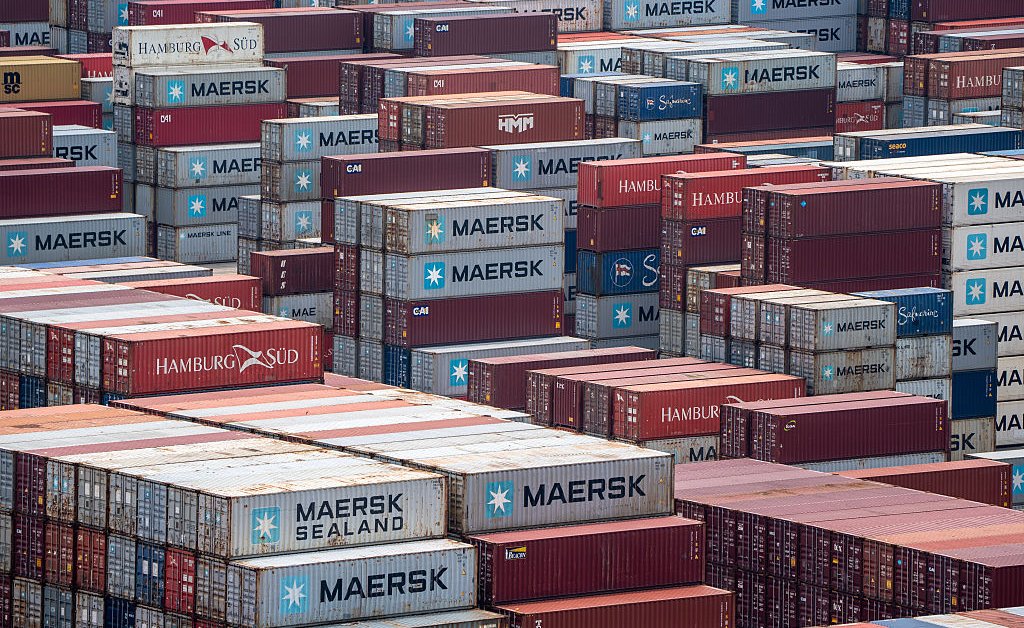In an instant, President Trump landed the most significant blow yet to the post-war trade regime last week as he announced aggressive tariffs on friends and foes alike. Even after his significant backtracking, it’s clear that the system of free flowing goods across international barriers that has defined economics globally in recent decades isn’t coming back anytime soon.
In the short term, we know the international tensions will disrupt supply chains for clean energy. As my colleague wrote earlier this week, many clean energy technologies are largely made in China, where tariffs now top 100%. But perhaps a more important question for long-term climate efforts is what system of global trade will emerge from the wreckage of the past two weeks—and the next three years?
Trade is already an active point of discussion in climate conversations. Even as the U.S. backs out of its own climate agenda and the European Union recalibrates climate policy in the face of populist pushback, it’s possible to envision a world where climate considerations become a key focal point in trade discussions.
Discussions linking climate and trade date back decades. In theory, trade restrictions represent an easy way to get over the free rider problem that keeps countries from taking aggressive action to reduce emissions. Countries that are acting on climate change can impose restrictions or fees on products from countries that aren’t making a similar level of effort. In practice, however, imposing climate-linked trade barriers has long frightened leaders who worried that they would cause geopolitical disruption.
That all changed during Trump’s first presidency. As the E.U. moved aggressively to cut its emissions, industry in the bloc began to complain that climate policy—particularly the bloc’s carbon price—put European companies at a competitive disadvantage. Trump’s first term moves to hamper trade—small by today’s standards but big at the time—created an opening for the E.U. The bloc went forward with a carbon tax on imports that took effect in 2023 for large firms in select sectors.
Trump is once again stomping on trade norms, and once again he has created an opening for new considerations around climate and trade. One place where that conversation has bubbled up is right here in the U.S. As Republicans search for ways to incorporate Trump’s desire for an aggressive trade agenda into a strategic vision, some D.C. policymakers have suggested that the U.S. might impose its own carbon fee at the border. Such a measure would punish China—which relies on high-emitting coal-fired power to manufacture products—with a rationale driven by both environmental concerns and economics. Even as the U.S. has neglected to enact a carbon price, its industrial base is cleaner in many sectors than those of most other countries.
Earlier this week, Republican Senators Lindsay Graham of South Carolina and Bill Cassidy of Louisiana introduced legislation that would do just that. Backers include traditional climate advocates like Ceres, a group that works with investors and companies to push decarbonization, as well as the America First Policy Institute, a think tank that promotes Trump’s agenda. The fee “is going to acknowledge the billions, if not trillions, the U.S. has spent controlling [emissions],” Cassidy said at a Capitol Hill event highlighting the new legislation this week. “China has not, which gives them an unfair advantage.”
Cassidy suggested the U.S. could partner with the E.U. and other allies to make their border standards align—though it’s unclear how that fits with Trump’s aggressive posture to typical U.S. allies.
Meanwhile, a completely different conversation is happening at the nexus of climate and trade in other parts of the world—one focused on solidarity and reciprocity rather than competition. Emerging market countries (think of India and Brazil) are furious as they assess the competitive landscape and the prospect that their products may face emissions taxes.
These policies, they argue, are unfair given the historic emissions from Global North countries. Moreover, a fee on carbon harms local companies, making it harder to invest in decarbonization. Instead, they insist that countries like the U.S. should impose more stringent policies on their own emissions and help pony up the funds to incentivize decarbonization in developing countries.
This issue was a key sticking point ahead of the United Nations climate conference last year in Azerbaijan; it’s safe to assume that it will come up again at this year’s conference in Brazil. When I asked Andre Correa De Lago, the Brazilian diplomat charged with leading this year’s U.N. talks, about this, he told me he hoped multilateralism could help lead to a breakthrough. “The only way of solving important issues is through cooperation,” he said.
And yet we know that the U.S. won’t be participating in the November talks in any meaningful way. At that point, Trump will only be a few short months from completing the U.S. withdrawal from the Paris Agreement. Indeed, the newly fragmented world that Trump is creating could very well splinter climate standards and clean technology supply chains. Companies that want to play in different markets will need to adapt, investing in low-carbon technologies tailored to emerging border requirements.
It’s hard to know exactly what comes next. But it’s clear that a new trade agenda is afoot—and climate will be a part of it one way or another.
(To get this story in your inbox, subscribe to the TIME CO2 Leadership Report newsletter here.)
Read the full article here


